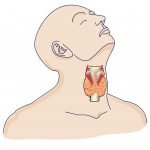The Functional Approach to ADHD
Dicken Weatherby, ND and Donald Yance, CN, MH, RH(AHG)
It’s alarming to see that close to 10% of children in the U.S. are being diagnosed with attention deficit hyperactivity disorder (ADHD) (Clinical Pediatrics), along with about 4% of adults annually. While conventional medicine tends to treat ADHD with pharmaceuticals, as practitioners of functional medicine we prefer to look for the functional imbalances that so often underlie ADHD diagnoses. With this as a foundation, we can restore balance to the system without adding the further insult and complications from drugs. This article will focus on assessment, giving overall guidelines to follow and some examples of how to implement them. Treatment will not be covered.
Detecting Likely Imbalances
Because so many factors can contribute to ADHD, the goal is to rule out what we can and narrow down the causes to the most important contributing factors, which then can be treated. It’s beyond the scope of this article to cover every test and angle, so we’ll take examples of likely imbalances and expand on how to use multifaceted testing to detect them.
Almost every child with ADHD is zinc deficient. Zinc is a mineral required by many enzyme systems. Zinc is absolutely necessary to produce stomach acid and is required by several of the body’s own digestive enzymes. Thus, zinc is critical for the digestive process, which, in many cases of ADHD, is damaged and dysfunctional. The zinc-copper ratio is often grossly abnormal, with copper being high. Thus, the zinc-copper ratio, which should be approximately 1:1, can be another good indicator of the need for more zinc when the ratio is imbalanced. In the case of an underlying zinc deficiency, we would begin to assess for this by using a signs and symptoms questionnaire. One of the questions that might induce a positive answer is whether a person regularly adds salt to his or her food. We also would look for a low alkaline phosphatase reading on a blood chemistry/CBC panel. And if we wanted other tests to back this up, we might use the packed erythrocyte or white blood cell zinc test, plus a hair analysis.
If we were investigating dysglycemia as a probable cause, blood chemistry and CBC analysis is a great place to start. We would look at blood glucose levels, keeping an eye out for low or high levels to assess for hypoglycemia or hyperglycemia. With hypoglycemia, in addition to decreased blood glucose (<80) we would also expect to see decreased LDH (<140) and decreased hemoglobin A1C (<4.1). In the case of hyperglycemia, we would expect to see high glucose (>100) as well as high hemoglobin A1C (>5.7). If either scenario looked probable, we would suspect dysglycemia. To pursue the cause of the dysglycemia, we might back this up with questionnaire results (which could point to things like frequent antibiotic use or dietary influences), in-office tests (such as a gastrotest to indicate pH level of the stomach) and a physical exam. In our opinion, the more angles we take and the more systems we investigate, the more we can be sure of our diagnosis and the more specific we can be about what’s going on. It is at this point that we can be confident that treatment to restore balance will be successful.
What to Look for in ADHD Cases
- Nutrient deficiencies, which can include amino acids, fatty acids, vitamins (B6 especially) and the minerals calcium, magnesium, selenium and zinc
- Toxic overload (such as lead)
- Dysbiosis and bowel toxemia
- Digestive dysfunction
- Dysglycemia
- Metabolism
- Thyroid
- Adrenal dysregulation.
External Factors That Can Contribute
- Toxic substances in food, water and air
- Diminishing levels of nutrients in food
- Overuse of antibiotics and other medications.
Internal Factors
- Bowel toxemia, including neurotoxins and bacteria in the gut
- Lack of HCL
- Little or no secretin release
- Little or no bicarbonate release
- Little or no pancreatic enzyme release
- Little or no intestinal enzymes.
How to Assess for Underlying Causes of ADHD
Some in-office tests to consider:
- A nutritional assessment questionnaire
- Functional physical exam
- Functional urinalysis
- In-office assessments, including the zinc taste test, tissue mineral assessment and oral pH.
Outsourced assessments might include:
- Blood chemistry and CBC (including thyroid panel)
- Hair analysis
- Tissue mineral analysis.
Additional Functional Tests to Consider
- Amino acid analysis (plasma)
- Fatty acid analysis
- Stool analysis
- Food allergies.
 Dicken Weatherby, ND is based in southern Oregon. A graduate of NCNM, Dicken is co-author of the bestselling book Blood Chemistry and CBC Analysis-Clinical Laboratory Testing from a Functional Perspective. He has self-published seven other books in the field of alternative medical diagnosis, has created numerous information products, and runs a number of successful Web sites (www.BloodChemistryAnalysis.com, www.Health-E-Marketing.com and www.StrawBale.com). He is involved in research, writing and consulting, and teaches functional diagnosis seminars in both the U.S. and his native country, the U.K.
Dicken Weatherby, ND is based in southern Oregon. A graduate of NCNM, Dicken is co-author of the bestselling book Blood Chemistry and CBC Analysis-Clinical Laboratory Testing from a Functional Perspective. He has self-published seven other books in the field of alternative medical diagnosis, has created numerous information products, and runs a number of successful Web sites (www.BloodChemistryAnalysis.com, www.Health-E-Marketing.com and www.StrawBale.com). He is involved in research, writing and consulting, and teaches functional diagnosis seminars in both the U.S. and his native country, the U.K.
 Donald Yance is an internationally known herbalist and nutritionist. He is the founder and medical director of the Centre for Natural Healing in Ashland, Ore. Through extensive research and clinical practice, he has developed his Triphasic system, which forms the cornerstone of his clinical approach. Donald is the founder and formulator of Natura Health Products, and founder and president of The Mederi Foundation, whose programs promote health education and clinical research on the use of natural medicine, with an emphasis in the field of integrative oncology.
Donald Yance is an internationally known herbalist and nutritionist. He is the founder and medical director of the Centre for Natural Healing in Ashland, Ore. Through extensive research and clinical practice, he has developed his Triphasic system, which forms the cornerstone of his clinical approach. Donald is the founder and formulator of Natura Health Products, and founder and president of The Mederi Foundation, whose programs promote health education and clinical research on the use of natural medicine, with an emphasis in the field of integrative oncology.









